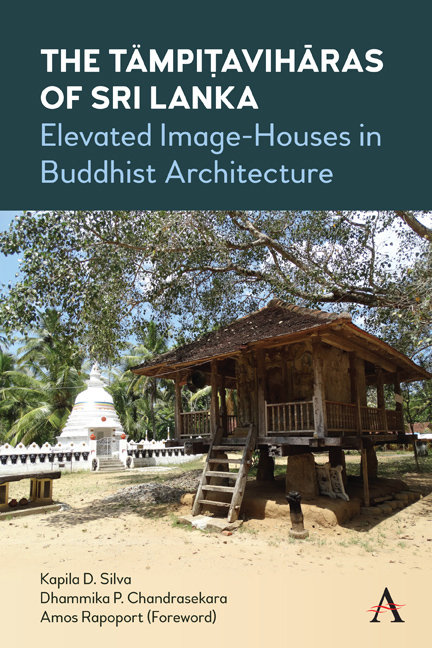Introduction
Published online by Cambridge University Press: 16 December 2021
Summary
On the following pages, we present illustrations of 50 selected ṭämpiṭavihāras in Sri Lanka. These illustrations sufficiently elaborate on the architectural aspects we discussed in Part 1. In selecting these examples, we chose the most unknown and hitherto unstudied ṭämpiṭavihāras. The selection is a representative sample of ṭämpiṭavihāras in various regions of the country and illustrates subtle variations in their architectural designs in the typology of ṭämpiṭavihāras. They belong mostly to the late eighteenth and early nineteenth centuries and have not undergone drastic alterations or inappropriate preservation and are probably the best examples to understand the original architecture of ṭämpiṭavihāras. These ṭämpiṭavihāras come from the districts of Anurādhapura, Gālle, Gampaha, Hambantoṭa, Kalutara, Kandy, Kǟgalle, Kuruṇǟgala, Mātara, Mātale, Monarāgala, and Ratnapura (Figure 43).
Teams of first-year students of the Department of Architecture in the University of Moraṭuwa, Sri Lanka, undertook the ardent task of preparing measured drawings of these ṭämpiṭavihāras. Their names and the years in which the drawings were done are mentioned in the brief introduction given for each ṭämpiṭavihāra. Collecting data on each ṭämpiṭavihāra – their histories, time periods when constructed or renovated, who were involved, and the like – became difficult as there were no proper historical documents available and as folklore and other oral historical sources were often contradictory. Consequently, the descriptions given for each ṭämpiṭavihāra are brief. The location maps given are not to scale and are simply to provide some navigational assistance.
- Type
- Chapter
- Information
- The Tämpitaviharas of Sri LankaElevated Image-Houses in Buddhist Architecture, pp. 73 - 74Publisher: Anthem PressPrint publication year: 2021

